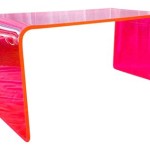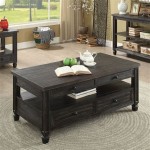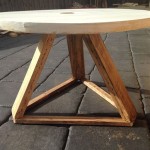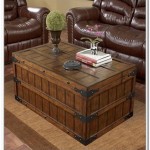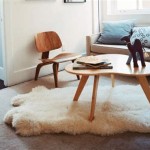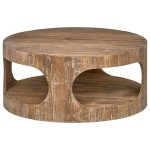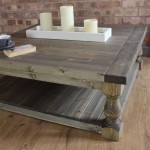Modern Dining Table Centerpiece Decor: A Comprehensive Guide
The dining table serves as a focal point in many homes, acting as a gathering place for meals, conversations, and shared experiences. Consequently, the centerpiece placed upon it significantly contributes to the overall ambiance of the dining space. Modern centerpiece decor diverges from traditional arrangements, embracing minimalist aesthetics, contemporary materials, and innovative design principles. The selection of a centerpiece involves careful consideration of the table's size, shape, and the existing decor of the room, as well as the desired mood and functionality.
The principles of modern design emphasize clean lines, geometric forms, and a limited color palette. This translates to centerpieces that are uncluttered and visually appealing without being overly ornate. Materials such as glass, metal, concrete, and natural wood are commonly employed to create a sophisticated and understated look. Understanding these principles is crucial for selecting and arranging a centerpiece that complements a modern dining space.
Key Considerations for Selecting a Modern Dining Table Centerpiece
Choosing the right centerpiece requires careful evaluation of several factors. These include the size and shape of the table, the existing décor of the dining room, and the desired function and aesthetic of the centerpiece itself. Failing to consider these elements can result in a centerpiece that feels out of place or overwhelms the space.
The size and shape of the dining table are paramount. A large, rectangular table can accommodate a longer, more elaborate centerpiece, while a smaller, round table benefits from a more compact and symmetrical arrangement. For instance, a long, low planter filled with succulents can stretch across a rectangular table, creating a visually appealing and minimalist statement. Conversely, a single, sculptural vase with a few carefully chosen stems is more suitable for a round table, allowing for unobstructed conversation and comfortable dining.
The existing décor of the dining room should also inform the choice of centerpiece. The centerpiece should complement the color scheme, style, and overall aesthetic of the room. A sleek, minimalist dining room with a monochromatic color palette might benefit from a centerpiece with geometric shapes and metallic accents. A more eclectic dining room with a mix of textures and patterns might call for a centerpiece that incorporates natural elements such as wood, stone, or greenery.
Functionality is another crucial consideration. If the dining table is frequently used for formal meals, a low-profile centerpiece is preferable to avoid obstructing views and hindering conversation. Alternatively, if the dining table is primarily used for casual gatherings or as a decorative element, a taller or more elaborate centerpiece might be appropriate. Candles, for example, can add a warm and inviting ambiance, but should be carefully chosen and positioned to avoid creating a fire hazard or obstructing views.
Popular Modern Centerpiece Styles and Materials
Modern centerpiece design encompasses a wide range of styles and materials, allowing homeowners to personalize their dining spaces and reflect their individual tastes. From minimalist geometric arrangements to naturalistic displays, the possibilities are virtually endless.
Geometric centerpieces are a hallmark of modern design. These arrangements often feature clean lines, sharp angles, and symmetrical forms. Materials such as metal, glass, and concrete are frequently used to create a sleek and sophisticated look. Examples include a set of geometric candle holders arranged in a linear pattern, a sculptural vase with a faceted surface, or a concrete tray filled with decorative spheres.
Naturalistic centerpieces bring the outdoors in, incorporating elements such as plants, flowers, wood, and stone. These arrangements can create a sense of warmth, tranquility, and connection to nature. Succulents, air plants, and moss are popular choices for low-maintenance and drought-tolerant centerpieces. Driftwood, river stones, and branches can add texture and visual interest. When using fresh flowers, it is important to choose blooms that complement the color scheme and style of the dining room.
Minimalist centerpieces embrace simplicity and functionality. These arrangements often feature a single, striking object or a small collection of carefully curated items. A single, sculptural vase with a few strategically placed stems, a set of elegant candlesticks, or a bowl of fresh fruit can all serve as effective minimalist centerpieces. The key is to choose objects that are visually appealing and meaningful, and to arrange them in a way that is both balanced and uncluttered.
The choice of materials plays a significant role in defining the overall aesthetic of a modern centerpiece. Glass is a versatile material that can be used to create a variety of effects, from sleek and minimalist to elegant and sophisticated. Metal, such as stainless steel, brass, or copper, adds a touch of industrial chic. Concrete is a raw and textured material that is often used to create sculptural and architectural centerpieces. Natural wood adds warmth and character. The combination of different materials can create visually interesting and dynamic centerpieces.
Arranging and Maintaining a Modern Dining Table Centerpiece
The arrangement and maintenance of a modern centerpiece are just as important as its initial selection. A poorly arranged or neglected centerpiece can detract from the overall aesthetic of the dining space. Proper arrangement involves careful consideration of balance, proportion, and visual flow. Regular maintenance ensures that the centerpiece remains visually appealing and functional.
Balance is a crucial element of any successful centerpiece arrangement. Symmetrical arrangements are generally more formal and traditional, while asymmetrical arrangements tend to be more casual and contemporary. The key is to create a sense of visual equilibrium, so that the centerpiece does not feel lopsided or unbalanced. This can be achieved by distributing weight and visual interest evenly across the arrangement.
Proportion refers to the relationship between the size of the centerpiece and the size of the dining table. A centerpiece that is too large can overwhelm the table and make it difficult to converse with guests. A centerpiece that is too small can get lost in the space and fail to make a visual impact. A general rule of thumb is to choose a centerpiece that is approximately one-third the length of the table.
Visual flow refers to the way the eye moves through the centerpiece arrangement. A successful centerpiece should draw the eye in and guide it through the different elements. This can be achieved by creating a focal point, using repetition, and varying the height and texture of the different elements. It is also important to consider the viewing angle. A centerpiece should look appealing from all sides, especially from the perspective of someone sitting at the table.
Regular maintenance is essential for keeping a modern centerpiece looking its best. This includes cleaning the centerpiece regularly to remove dust and debris. If the centerpiece includes plants or flowers, it is important to water them regularly and remove any dead or dying foliage. Candles should be trimmed regularly to prevent smoking and ensure a clean burn. By taking care of the centerpiece, it can remain a beautiful and functional element of the dining space for years to come.
In addition to these general guidelines, there are a few specific considerations for different types of centerpieces. For example, when arranging a floral centerpiece, it is important to choose a vase that complements the flowers and provides adequate support. The stems should be cut at an angle to promote water absorption, and the water should be changed regularly to prevent bacterial growth. When arranging a candle centerpiece, it is important to choose candles that are the right size and shape for the holders, and to position them away from flammable materials.
Ultimately, the best modern dining table centerpiece is one that reflects the individual style and taste of the homeowner, complements the décor of the dining room, and serves a functional purpose. By considering the factors outlined above, it is possible to create a centerpiece that is both visually appealing and practical, enhancing the overall ambiance of the dining space.

16 Modern Dining Table Centerpieces You Can Use Year Round

Spice Up Your Dining Table With Modern Centerpieces The Seattle Times

Dining Room Table Centerpieces

80 Best Dining Room Ideas And Decorating Tips

Luxury Dining Room Ideas

Dining Room Table Centerpieces

25 Elegant Dining Table Centerpiece Ideas

Beautiful And Easy Dining Room Table Centerpiece Ideas Stonegable

28 Stunning Dining Table Centrepieces Furniturebox

Spice Up Your Dining Table With Modern Centerpieces The Seattle Times
Related Posts

